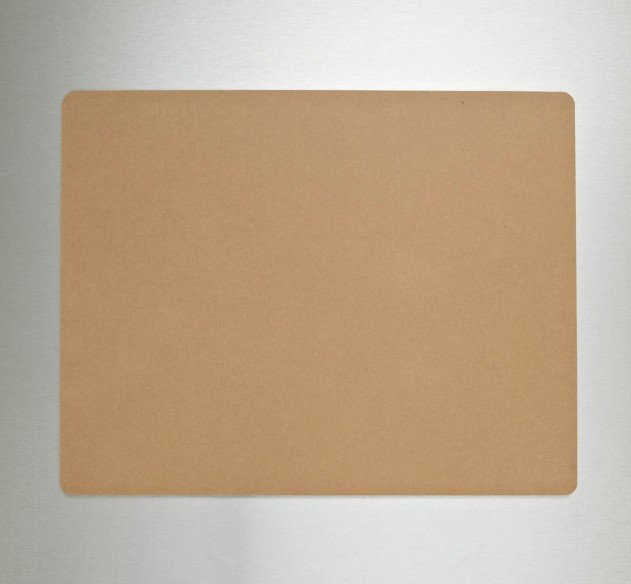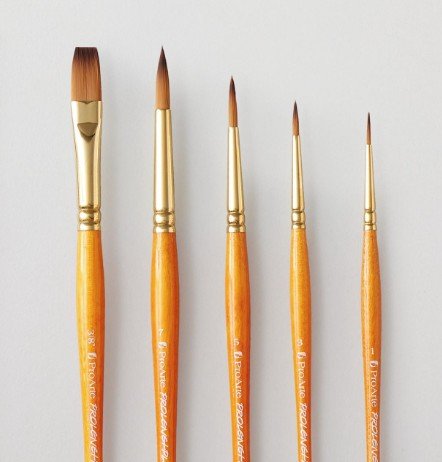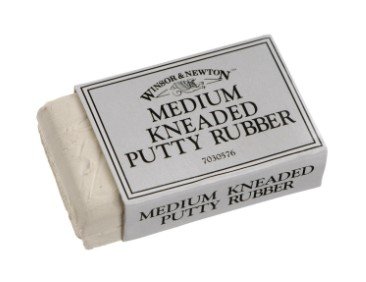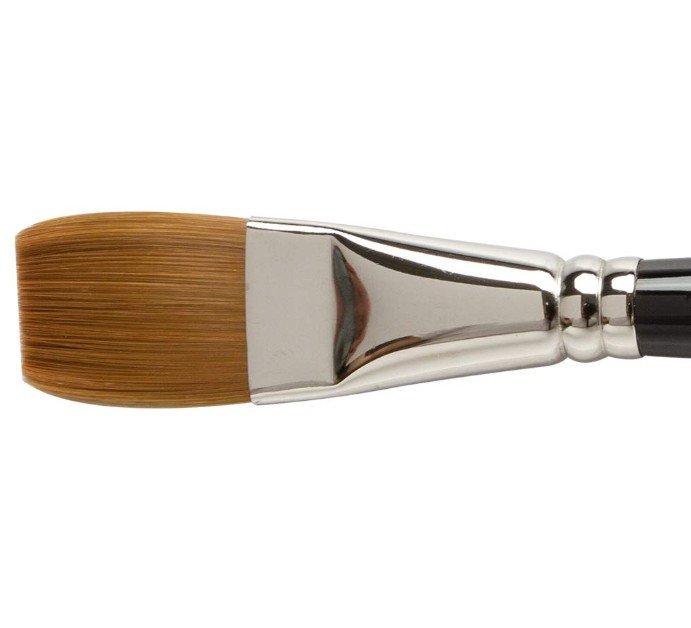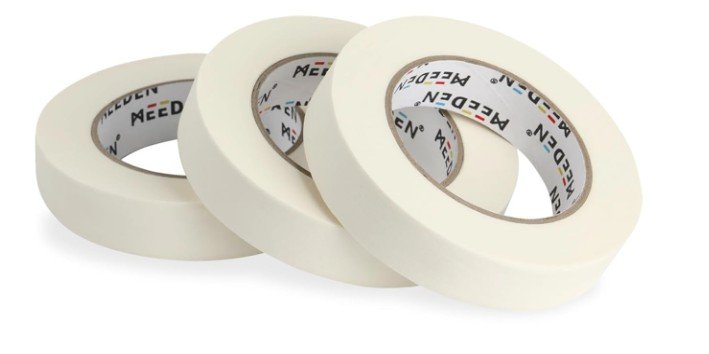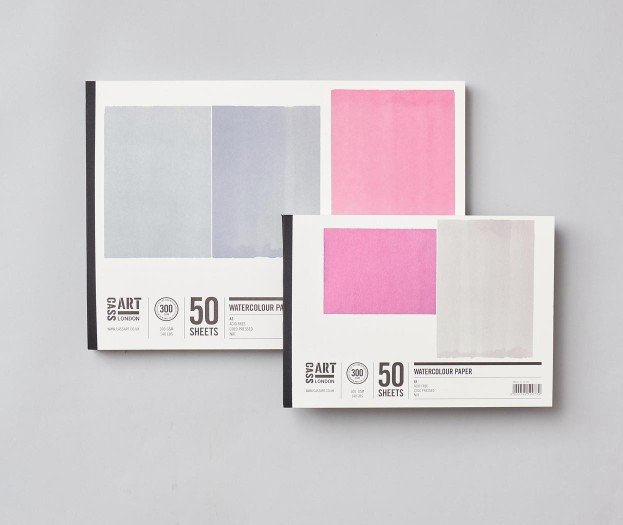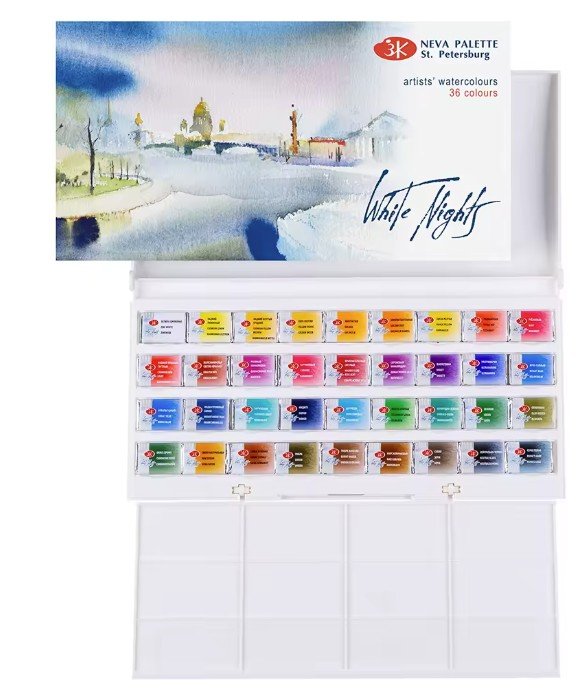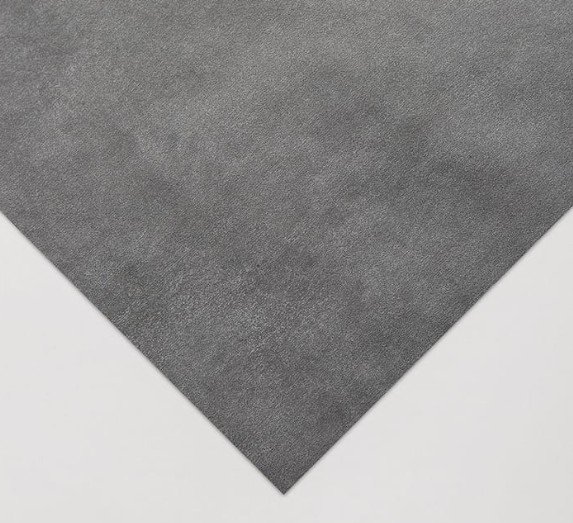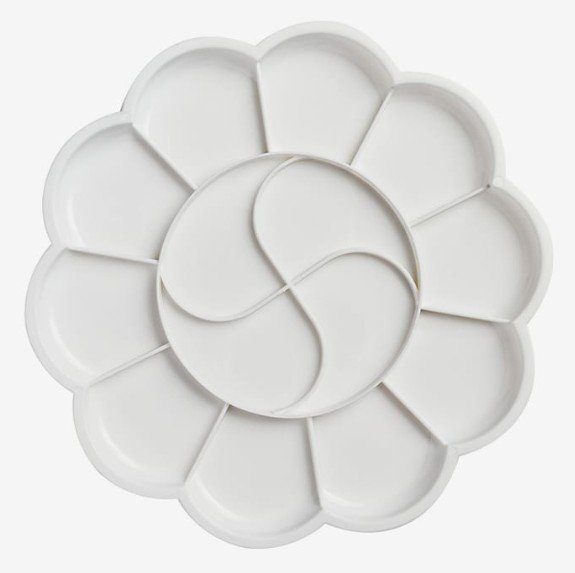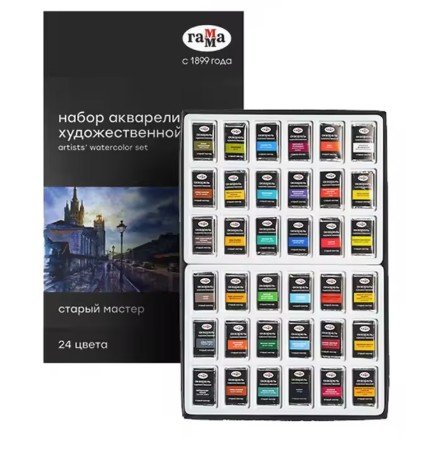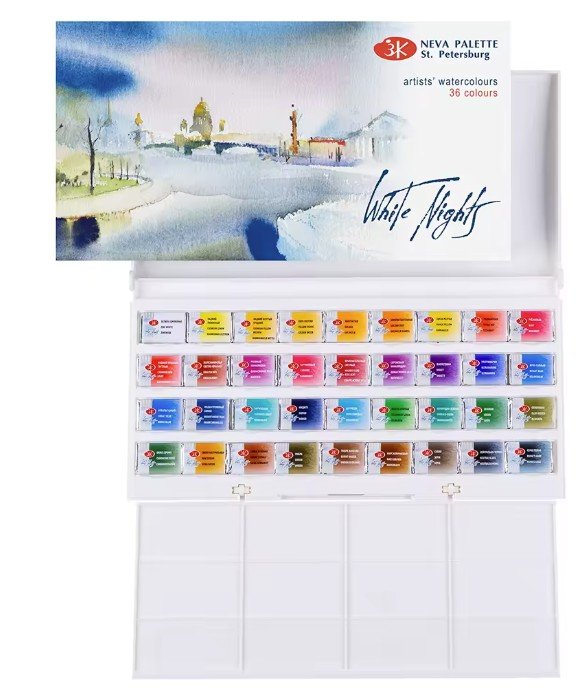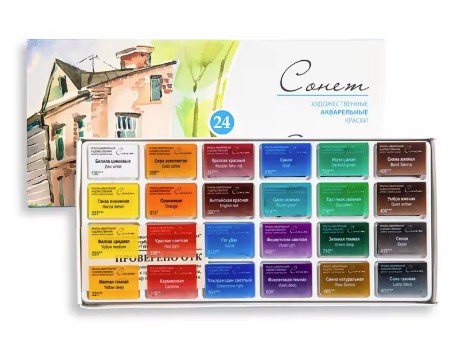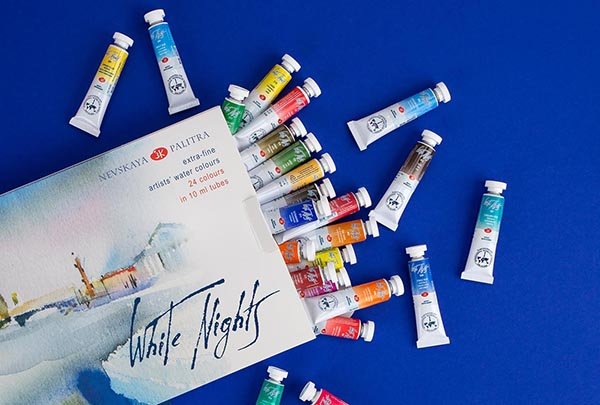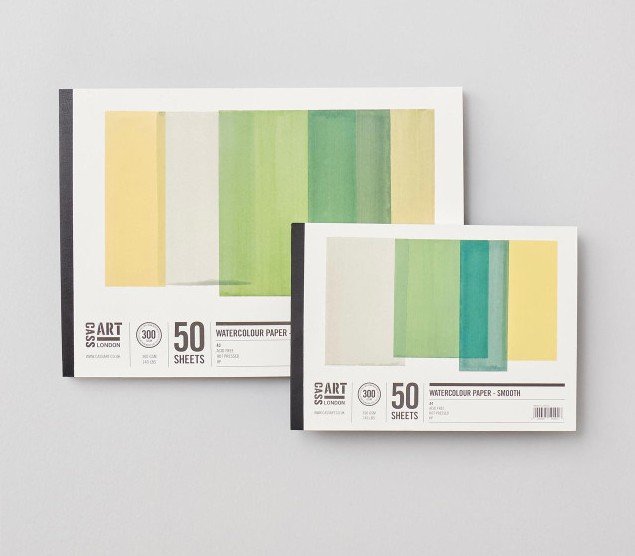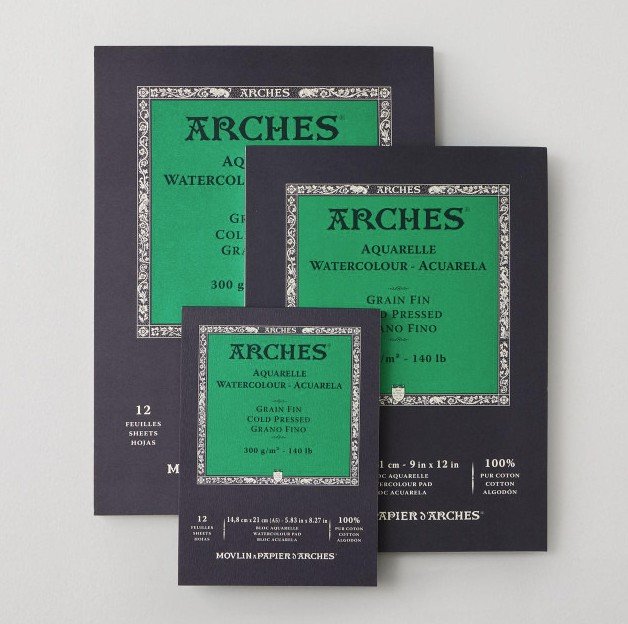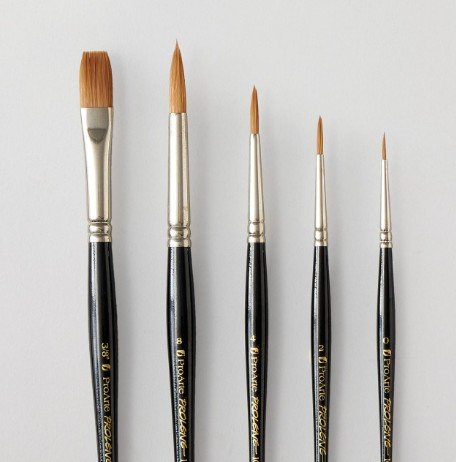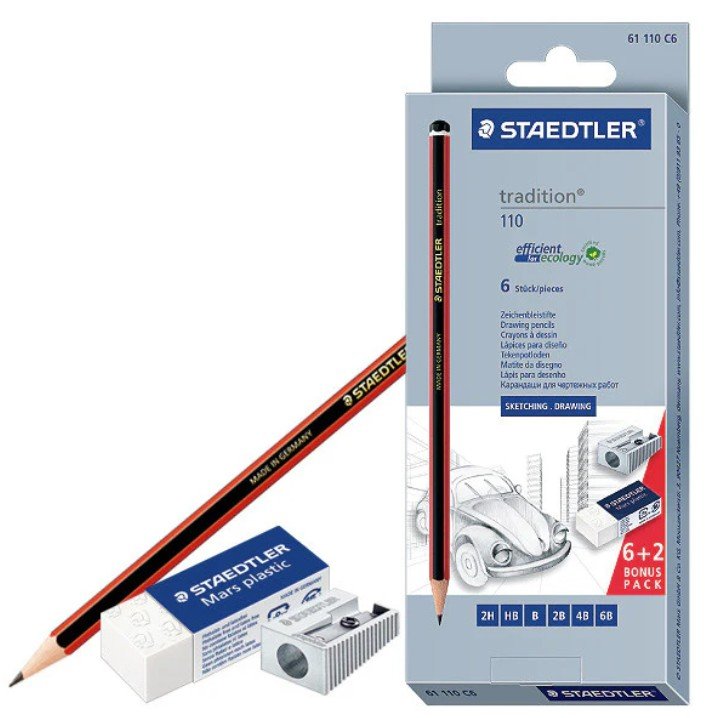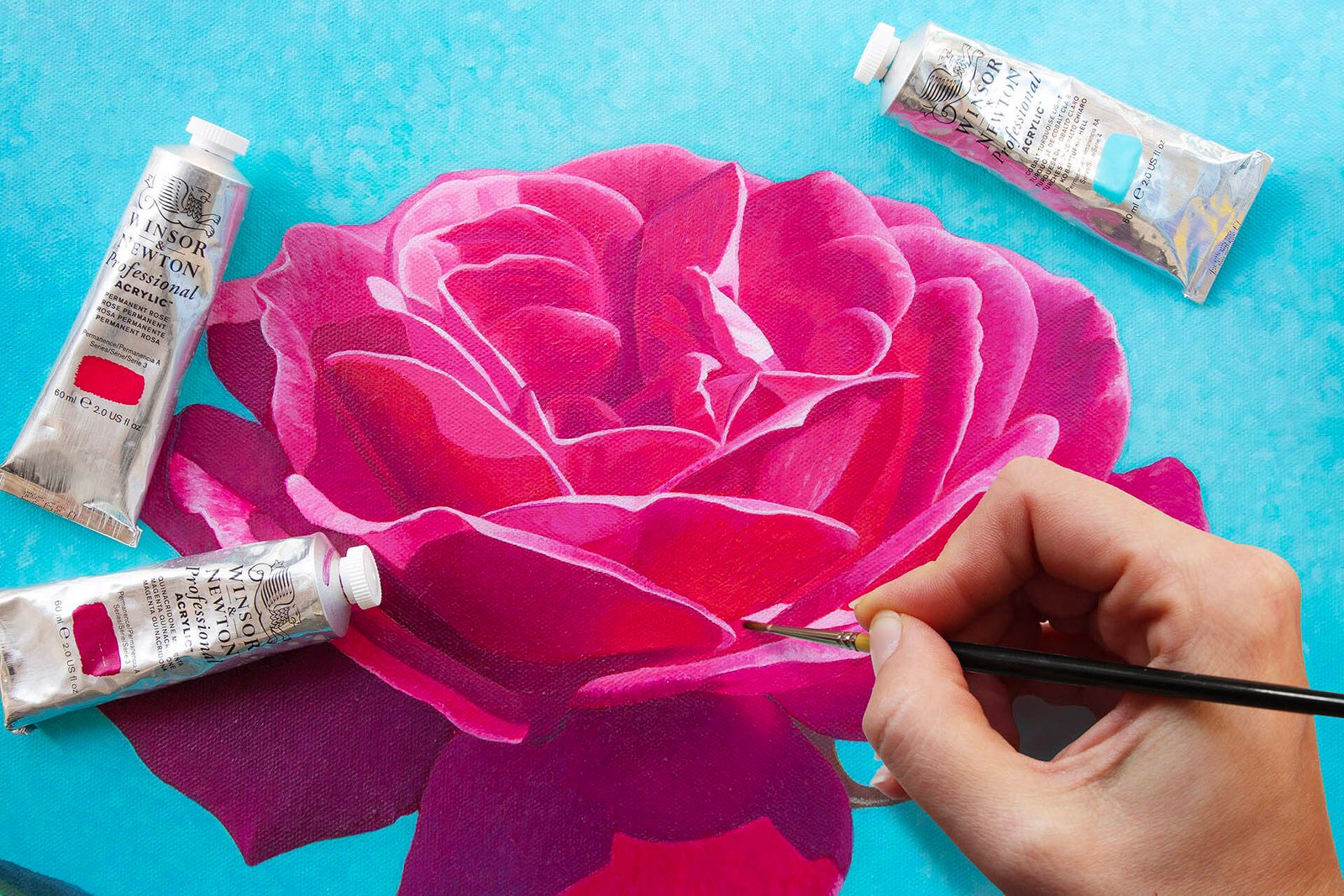Watercolour Painting
Materials guide for beginners
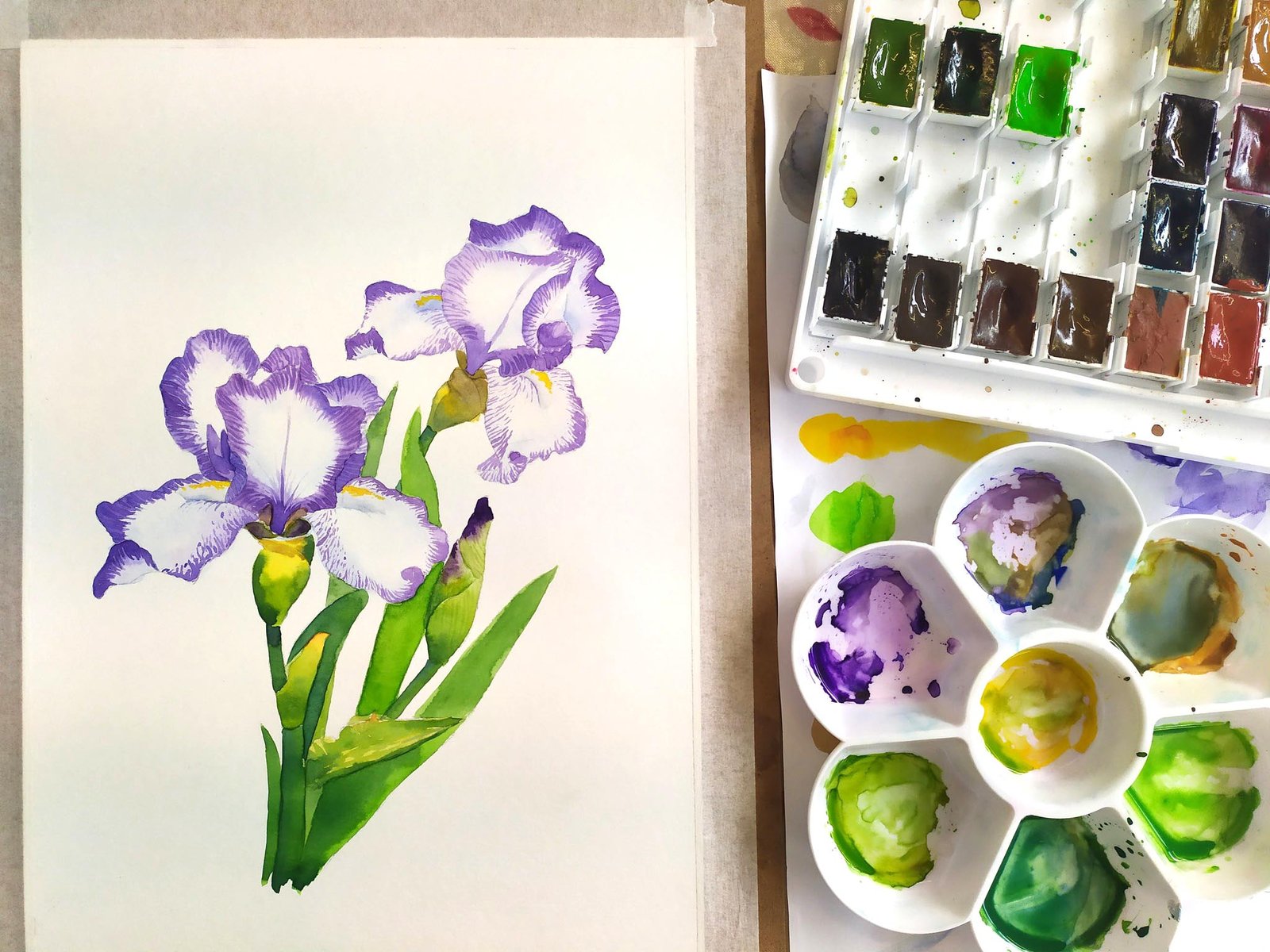
List of materials
Watercolours set – pans or tubes (12, 18 or 24 colours)
Watercolour paper 300gsm (cold pressed or hot pressed, A4)
Palette
Set of round brushes (sizes: 12,9,6,3,1)
Flat brush (1 inch)
Board
Hard pencil
Carbon paper wax-free (A4)
Kneadable eraser
Masking tape (1.8cm)
Large jar for water
Paper towel
Art materials suppliers
CassArt – offers a wide range of art materials. I usually buy watercolour paper pads (50 sheets) cold and hot pressed.
JacksonArt – offers a wide range of art materials. I usually buy carbon paper wax-free.
Hartem – watercolour set White Nights by Nevskaya Palitra.
Art Discount – a wide range of art materials at good prices.
eBay
Amazon
The Works – mdf board (buy A3 for A4 paper).
The Range – simple palette, pencils, board, paper (10 sheets), student grade brushes, kneaded eraser Winsor & Newton.
Watercolour paints
When making a choice between student and professional range, you might only consider the price. Usually professional range would have maximum content of high-quality fine pigments on a natural gum arabic binder and be resistant to fading over time. On the other hand student range could be of very good quality, if you know which brand to choose.
Probably you think that professional art supplies must cost a lot of money. If you know a few good brands and do a little research online, you might find your favourite paints at better prices. I would like to share with you my favourite brands of professional watercolours.
- Winsor and Newton Professional
- Rosa
- White Nights by Nevskaya Palitra
- Old Master by Gamma
Winsor & Newton brand offers a great quality watercolours – pans and tubes, but at quite high prices.
Rosa is a Ukrainian brand. They sell watercolour sets of 12, 24 tubes and pans. 1 tube 10ml costs around £4 (available to buy from eBay).
White Nights by Nevskaya Palitra are famous Russian professional watercolours. You could order watercolours in pans or tubes from Hartem online shop.
My favourite student quality watercolours:
- Sonnet by Nevskaya Palitra – 24 pans (available on eBay)
- Studiya by Gamma – 18 pans
Watercolour paper
I am recommending 300gsm watercolour paper because it’s thickness provides excellent resistance to buckling and warping, even with wet techniques, and allows for better paint handling and movement. It is ideal for smooth washes and allows for detailed work without damaging the paper.
For beginners the paper does not have to be made of cotton. It feels much better to paint on cotton paper, but it is more expensive.
Cold pressed paper has some texture to it and is perfect for painting landscapes or animals.
Hot pressed paper is smooth and is great for botanical painting, when you need to add fine details.
It is more economical to buy 50 sheets from CassArt (https://www.cassart.co.uk/) or Winsor & Newton (eBay).
In case you feel that you are ready to invest into a high quality paper, you could look for Arches 100% cotton paper used by professionals.
Brushes for watercolour
Good watercolour brushes come in both natural and synthetic options, and the best choice depends on your budget and painting style. Natural hair, like sable and squirrel, offers excellent water absorption for smooth washes. Modern synthetics provide a cruelty-free, affordable, and durable alternative with better spring.
For beginners I would recommend to buy a set of synthetic round brushes: 12, 9, 6, 3, 1; and one large flat brush 1 inch.
ArtStudio by The Range offers basic student grade synthetic brushes. Daler Rowney Graduate flat brush 1 inch has mix of synthetic and natural hair.
If you are looking for a better quality you could buy a watercolour brushes set by ProArte. If you are ready to invest into your brushes, you could look for natural hair or professional quality synthetic brushes by Winsor & Newton.
Preparing a sketch
It is a good practice to stretch watercolour paper on the board using a masking tape.
For watercolour painting it is the best to use a hard pencil for sketching. The lines would look crisp but quite light and delicate and the graphite would not mix with your paint.
If you are not comfortable to sketch you could use a trace down carbon paper (wax free). Place a printout of your photograph over carbon paper and applying some pressure trace the outlines with pencil. Then using a kneadable art eraser gently tap very dark lines to pick up any loose graphite.
After you finish your sketch wet the whole paper with clean water. Using a large flat brush apply water in horizontal strokes. Please make sure not to leave any puddles. Wait until the paper is dry.
Techniques
Wet-on-dry – is a painting technique where wet paint is applied to a dry surface, either clean paper or a previously painted and dried layer. This method provides more control over the paint and allows for crisp edges and details, as the wet paint doesn’t bleed into the dry surface.
Wet-on-wet – is a technique where paint is applied to wet paper, allowing for soft edges, blending, and diffusion of colour. This technique is popular for creating smooth gradients, soft backgrounds, and atmospheric effects.
Lifting – allows to create bright highlights by lifting paint from areas where you want to suggest light. You could use a brush, sponge, cloth or paper towel.
If the paint is dry – use a clean, damp brush to gently reactivate the paint and then blot it with a paper towel or cloth.
If paint is slightly damp, but not wet – use a clean, damp brush to mop the paint from the paper.
Remember to clean your brush/material before each lifting attempt to avoid spreading the colour.
Softening – allows to create soft edges. Use the “wet-on-wet” technique by painting onto a pre-wetted area of the paper, or by using a clean, damp brush to gently feather the paint on the edge while it’s still wet. Alternatively, on a dry or partially dry hard edge, you can soften it by dabbing a barely damp, clean brush around the edge to lift and feather the colour into the surrounding area.
Related Posts
5 October 2025
Acrylic: Materials guide for beginners
A list of basic art materials for beginners in acrylic painting.
